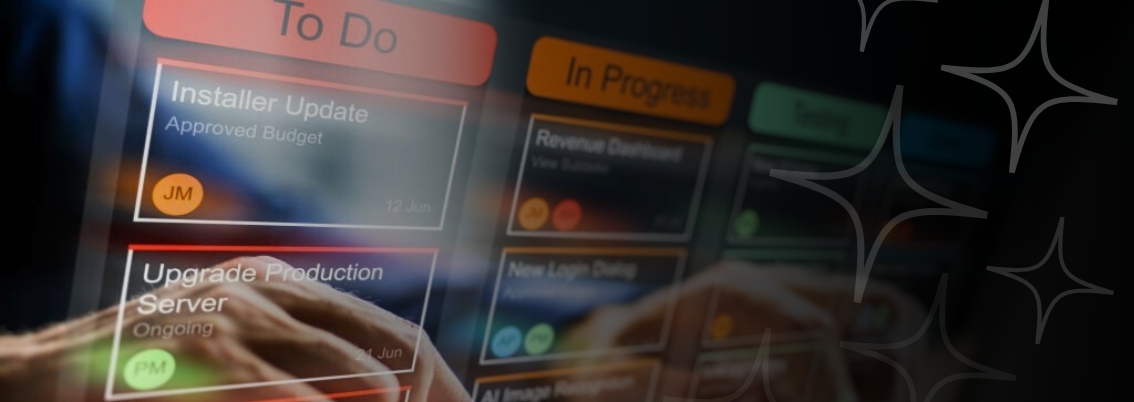AI and the Product Backlog: ChatGPT Training in Action
This post is part of our ongoing series exploring AI’s role in Agile. In our previous article, we examined how AI assists with backlog refinement—what worked and where it fell short. Today, we’re diving into the practical side: how to train ChatGPT to break down high-level tasks, distribute workload, and prioritize your sprint backlog more effectively.
But here’s the critical piece: not all AI models are equal when it comes to backlog management. ChatGPT-4o allows you to create custom GPTs, giving you control over training data and backlog refinement. Other versions—like o1 and o3—lack this feature, which significantly limits how well they can adapt to your specific Agile processes.
This means that with ChatGPT-4o, you can create a tailored AI assistant that securely retains and refines your backlog management approach over time. In contrast, o1 and o3 lack the ability to store and process your critical data in a dedicated environment, creating limitations that require constant manual intervention.
This makes a world of difference when working with proprietary backlog data, team-specific sprint structures, and custom workflows.
Bridging the Gap Between Theory and Practice
We’ve talked a lot about the why of AI-driven backlog refinement. The main takeaway? While ChatGPT isn’t fully autonomous, it’s already proving invaluable as an assistant—quickly drafting user stories, recalling repetitive tasks, and suggesting preliminary priorities. But how do we turn these promises into actual sprint outcomes?
Below, we’ll walk you through the steps we use to train ChatGPT. You’ll see how to feed it the right mix of inputs—from team capacity to sprint history—so that each sprint it proposes is realistic, well-prioritized, and aligned to your broader product goals.
If ChatGPT is going to break down your backlog accurately, it needs context. The more structured your inputs, the more refined the output. Think of it like teaching a junior team member.
1. Introducing Scrum Fundamentals
By absorbing the key principles from Jeff Sutherland’s Scrum: The Art of Doing Twice the Work in Half the Time, ChatGPT gains vital context for effective backlog refinements. Core Scrum values—like iterative development, transparency, and continuous improvement—guide how tasks are broken down, story points are assigned, and priorities are set. This ensures each recommendation aligns with real-world Scrum practices, helping your team deliver maximum value each sprint.
2. Lay the Foundations: Team & Project Context
Before ChatGPT can break down your backlog accurately, it needs to understand the who and the what of your project.
- Team Composition & Time Commitments
- Product Owner at XY% capacity (XY total sprint points)
- Scrum Master at XY% capacity (XY total sprint points)
- Developers at XY% capacity (XY total sprint points)
- UX/UI Designer at XY% capacity (XY total sprint points)
- Other roles
This ensures ChatGPT won’t overload any single role, keeping your sprint plan realistic.
- Project Description & Tech Stack
- What are you building? A web app, a website, a mobile application?
- Core Technologies? (e.g., React, Node.js, Shopify, WordPress)
- Primary Goals? (e.g., increase user sign-ups, improve page load speed, launch a new feature)
Giving ChatGPT an overview of your product’s purpose, target audience, and technology stack helps it suggest tasks in the right context (for example, pointing out UI considerations if you’re using React or factoring in SEO if it’s a marketing site).
- Priorities & Roadmap Highlights
- Are there hard deadlines tied to upcoming releases or events?
- Are certain features more urgent due to user feedback or stakeholder pressure?
By laying out team details and project context first, ChatGPT can align tasks to your actual capacity and overarching goals. Think of it like onboarding a new team member: the more background they have, the smarter their contributions.
3. Provide Relevant Sprint History
As much as ChatGPT learns on the fly, it isn’t automatically synced to your Jira backlog. Manually give it a glimpse of your last few sprints:
- Recent Sprints Overview
- Velocity (total story points completed)
- Types of tasks (development, design, content, etc.)
- Retrospective Notes
- What slowed you down?
- Which tasks took longer than expected?
By referencing past sprints, ChatGPT can better gauge your team’s true velocity and spot patterns in repetitive tasks or underestimation. The goal is to teach the AI how your team typically works, so it can propose more accurate story points and prioritization sequences.
4. Distinguish Repetitive vs. New Tasks
Now that ChatGPT knows your team, your project, and your sprint history, it’s ready to handle the what of your backlog.
- Export High-Level Jira Tasks
- Pull key items directly from your Product Backlog in Jira (e.g., “Implement user login flow,” “Redesign homepage banner”) so ChatGPT can break them down further.
- Identify Repetitive Tasks
- Tasks like routine design updates, monthly system checks, or weekly content audits belong in a separate reference list. By providing a single source of truth for these recurring items—each with a predefined description, definition of done (DoD), and story point estimate—you save a ton of time.
- Pro Tip: Use consistent naming and formatting for repetitive tasks so ChatGPT recognizes them from sprint to sprint.
- Outline New Features
- Provide a brief feature doc or bullet points explaining the value proposition, target user, and acceptance criteria for any net-new capabilities you’re building. This context is crucial for ChatGPT to generate meaningful user stories.
Once ChatGPT sees which tasks are repeated and which are brand-new, it can auto-fill recurring items into your sprint plan while dedicating extra effort to refining the new features.
5. Prioritizing Backlog
With team & project context, past sprint insights, and the actual tasks (repetitive or new) in place, ChatGPT is primed to:
- Break down high-level epics or tasks into smaller user stories.
- Suggest story point allocations that align with your typical velocity.
- Draft an initial priority order based on urgency, dependencies, and overall capacity.
Prompt example:
“Hi ChatGPT! Here is our latest Product Backlog, along with a new feature we want to add this sprint:
- Product Backlog Tasks
- [List current backlog items—e.g., ‘Refactor user login flow,’ ‘Update homepage design’]
- New Feature Information: XY
- [Link or brief description of the new feature doc, including key requirements or acceptance criteria]
Let’s aim for a well-balanced sprint that delivers maximum value while keeping scope realistic. Please provide a clear breakdown of tasks, owners, and points, along with short rationales for each decision.”
6. Validate & Refine
No AI is an outright replacement for human judgment. Once you have ChatGPT’s proposed breakdown, gather your Scrum team for a quick review:
- Cross-Check Story Points: Does ChatGPT’s sizing match your team’s usual velocity?
- Validate Priorities: Does the suggested sequence align with business goals or sprint objectives?
- Allocate Proper Owners: If ChatGPT missed a known skill overlap or personal leave, adjust accordingly.
ChatGPT will respond with a proposed sprint plan—creating user stories, assigning owners, and even explaining why it prioritized one feature over another. It’s not perfect yet, but it drastically reduces manual effort.
We’ve found that this human-AI collaboration leads to faster planning cycles. ChatGPT’s initial draft is often 70–80% there, leaving you to finesse the final 20%.
7. Common Pitfalls—and How We’re Tackling Them
Despite its progress, ChatGPT isn’t infallible. Here are the biggest hiccups we’ve encountered:
- Over-Simplified Estimations
- ChatGPT sometimes overlooks complexities like integration testing or cross-team dependencies. We handle this by giving it explicit notes on potential complexity or risk factors.
- Forgetting Context Over Long Conversations
- We occasionally have to remind ChatGPT of earlier details, especially in multi-sprint planning. The workaround? Summarize key points from the conversation in each new prompt.
- Limited Real-Time Access
- ChatGPT can’t automatically pull your Jira data or run real-time velocity calculations (yet). A manual data handoff is still necessary.
Why This Matters for Agile Teams
Efficiency Gains: By automating parts of backlog refinement, we’ve reclaimed hours of meeting time.
Consistency: ChatGPT treats repetitive tasks the same way every time, avoiding human error or forgetfulness.
Enhanced Focus: With admin overhead out of the way, teams can focus on strategic decisions, innovation, and solving user problems.
Still, AI doesn’t replace the need for a skilled Scrum team. It’s an assistant—helping you catch oversights, stay organized, and move faster. The ultimate decisions, trade-offs, and creative problem-solving remain human territory.
Ready to Supercharge Your Next Sprint?
- Review Past Sprints: Gather velocity data, task details, and retrospective insights.
- Prepare Structured Inputs: Make sure ChatGPT can see your team’s capacity, repetitive tasks, and new feature overviews.
- Draft & Refine: Let ChatGPT propose a sprint plan, then iterate with your team for final sign-off.
We’re not at full automation yet, but each iteration brings us closer to the dream of AI-driven backlog refinement. Stay tuned for our next post, where we’ll dig even deeper into the nitty-gritty of AI-assisted Scrum.
Got Questions?
- Dive into Jeff Sutherland’s books for more Scrum fundamentals.
- Or schedule a consultation to see how AI can accelerate your Agile workflow right now.
Because the future of Agile isn’t about replacing teams with AI—it’s about empowering them to do their best work.



